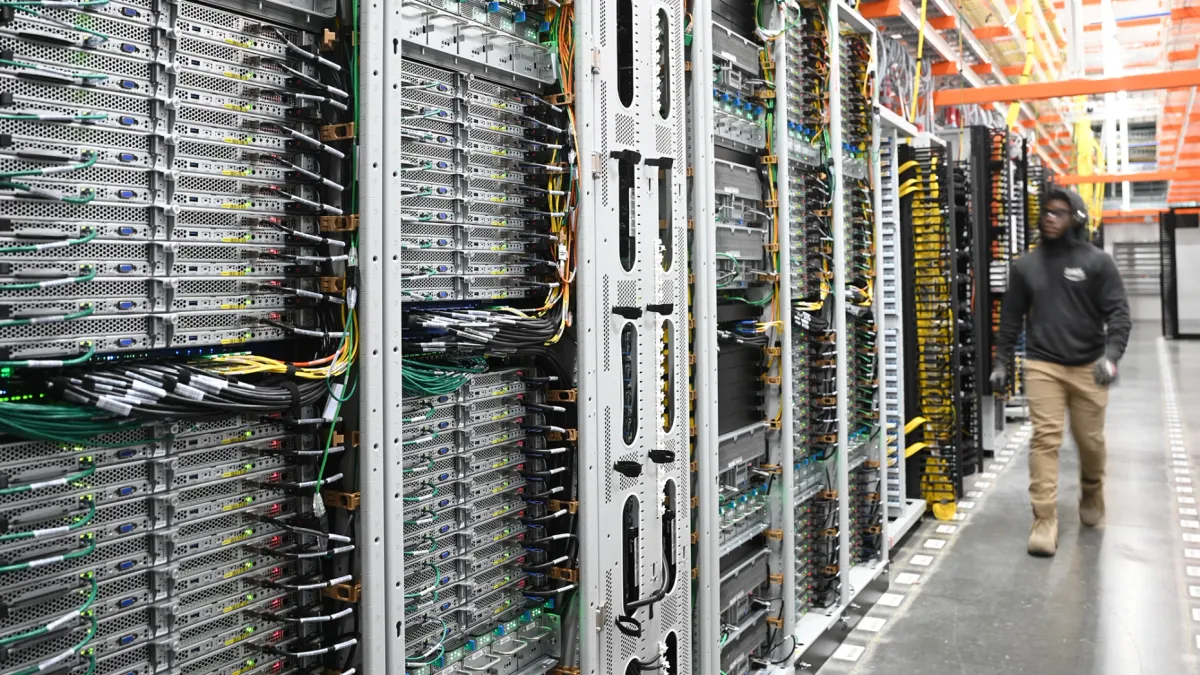Dive Brief:
- Ohio’s ratepayer advocate is urging federal regulators to ensure residential ratepayers don’t pay for transmission upgrades that Dayton Power and Light, which operates as AES Ohio, plans to make to serve an Amazon Data Services’ data center.
- In the data center project’s first phase, the facility’s load is expected to grow from 65 MW when it starts operations — slated for Sept. 15, 2026 — to 480 MW within a year, and then ramp up to a total of 1,500 MW during the project’s second and third phases, which end in January 2031, AES Ohio said in filings with at the Federal Energy Regulatory Commission.
- AES Ohio said its agreement with Amazon is designed to shield the utility’s other customers from its share of the project’s costs, expected to total $22.8 million in the first phase. The agreement, for example, requires Amazon to pay AES Ohio the anticipated upgrade costs if the data center in Jefferson Township, Ohio, does not start operations; does not maintain a minimum load over 10 years; or comes online but ceases operations less than 10 years later.
Dive Insight:
Under the agreement, Amazon will pay AES Ohio a transmission cost recovery rider, or TCRR, that the utility expects will generate revenue that at least equals the network upgrade costs.
However, the Office of the Ohio Consumers’ Counsel said in a Nov. 13 protest at FERC that the language in the proposed agreement is “vague and undefined” and “ambiguous,” leaving residential ratepayers without adequate protections from the project’s potential costs.
“To protect consumers, FERC should require AES Ohio and Amazon to amend this language and unequivocally state that the Network Upgrade costs will be exclusively collected by AES Ohio through TCRR charges to Amazon regardless of whether ‘the load associated with the New Customer Facilities reaches the Minimum Load,’” the OCC said.
Under the agreement, the data center’s required minimum load ramps up from 45.5 MW when it begins operating to 336 MW by Sept. 15, 2027.
The data center agreement comes as AES Ohio's average monthly residential bills have soared about 53% in the last four years to $215.03 from $141.24, with the utility proposing a 15% residential rate hike, according to the OCC.
“Given the ongoing economic hardship and looming massive utility bill increases for AES Ohio’s residential consumers, the Commission should require the [construction service agreement] to include specific language to preclude shifting data center costs to those consumers,” the OCC said.
AES Ohio asked FERC to approve the agreement by Dec. 23.
Meanwhile, a Public Utilities Commission of Ohio administrative law judge has scheduled a hearing on Dec. 3 to take testimony on competing settlement agreements that would establish a tariff for data centers connecting to AEP Ohio’s system.
Parties to one agreement include AEP Ohio, PUC staff, the OCC, the Ohio Energy Group, Ohio Partners for Affordable Energy and Walmart. Amazon, Google, Microsoft and Meta joined Constellation Energy and other groups in proposing their own set of rates for data centers and other “electricity-intensive” customers for PUCO consideration.















